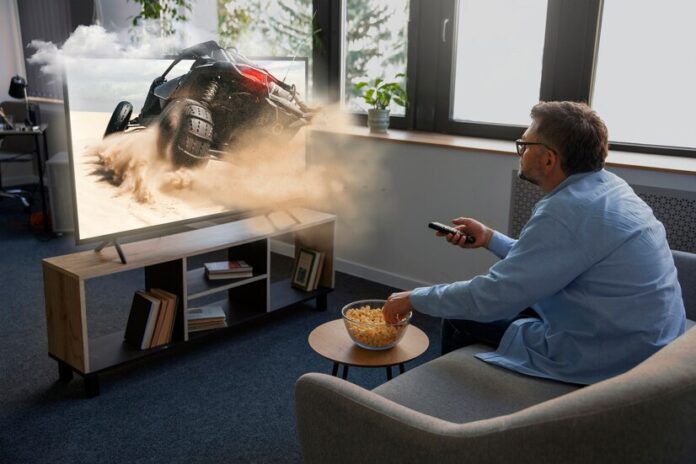For gamers and tech enthusiasts, CRT (Cathode Ray Tube) filters are more than just a nostalgic nod to the past—they’re a powerful tool for recreating the retro gaming aesthetic. But have you ever tried running a CRT filter and noticed your system sweating a little too hard? You’re not alone. CRT filters, while delivering visual charm, have a reputation for being hardware-intensive.
This blog dives deep into the world of CRT filters, exploring why they demand so much computational power, how they affect gaming performance, and what strategies you can use to optimize your system without sacrificing visual quality.
What Are CRT Filters, and Why Do They Matter?
Understanding CRT Filters
CRT filters are software-based effects that mimic the unique visual characteristics of old CRT monitors. These include scanlines, shadow masks, phosphor glow, and blur effects that were inherent to the technology. For retro gaming enthusiasts, these filters recreate the authentic look of the games as they were originally experienced.
Types of CRT Filters
The gaming and tech world has developed various types of CRT filters to cater to the diverse preferences of users:
- Basic Filters – Add simple scanlines and mimic the curvature of CRT screens.
- Advanced Filters – Include features like color distortion, phosphor effects, and bloom to provide a more accurate CRT experience.
- Custom Shader Filters – Allow users to tweak parameters, offering maximum control for the most demanding retro gaming fans.
Why Use CRT Filters?
For many gamers, modern HD and UHD monitors display retro games too sharply, losing the charm of their pixelated art. CRT filters soften the visuals, evoke retro gaming nostalgia, and sometimes improve the experience of older game designs. However, the more accurate and advanced the filter, the more strain it places on the GPU and CPU.
Why Do CRT Filters Require Significant Horsepower?
Layers of Complexity
Running a CRT filter isn’t as simple as applying an Instagram-like overlay. These filters often simulate multiple visual effects simultaneously, such as:
- Subpixel Simulation – Reconstructing how pixels appeared on CRT screens by rendering them at a much higher resolution.
- Scanline Effects – Adding horizontal lines across the screen to mimic CRT displays.
- Glow and Bloom – Simulating light diffusion caused by CRT phosphors.
- Shadow Masks – Recreating dot patterns or aperture grilles for that signature retro feel.
Each of these processes demands high computational resources, particularly for real-time effects during fast-paced gameplay.
Processing High-Resolution Graphics
Modern monitors often output at resolutions far higher than CRTs originally supported. To make a CRT filter work seamlessly on a 4K screen, for instance, the system must emulate effects originally designed for low-resolution environments at much higher detail. This significantly increases the GPU load.

Shader Complexity
CRT filters often rely on complex shaders—mini-programs that run on your GPU to render specific visual effects. Advanced shading algorithms create accurate textures, adjust colors frame-by-frame, and simulate the curvature of a CRT screen. The more lifelike the CRT effect, the more intensive the shader.
A Trade-off Between Frames and Fidelity
The hardware impact of CRT filters can be particularly noticeable in gaming. Enabling advanced CRT effects often results in lower frame rates, increased input lag, and overheating. For competitive gaming, where milliseconds count, running heavy-duty filters can be a noticeable drawback.
How to Optimize CRT Filters for Better Performance
If you’re committed to keeping that perfect retro aesthetic while maintaining smooth performance, here are some strategies to strike a balance:
Adjust Filter Settings
Most CRT filters have customizable settings. Start by tweaking parameters to prioritize performance over fidelity:
- Reduce the resolution of the CRT effect.
- Simplify effects like bloom and glow if they aren’t essential for your experience.
- Disable curvature effects on flat-screen monitors.
Upgrade Your Hardware
If your system consistently struggles with processing CRT filters, consider upgrading key components:
- Graphics Card (GPU): A card with more processing cores can handle complex shaders more efficiently.
- RAM: More memory reduces the chances of performance bottlenecks.
- Processors: A powerful CPU enhances overall game performance, especially for CPU-heavy CRT filters.
Use Lightweight Filters
Switch to filters optimized for performance rather than visual authenticity. For example, basic scanline filters tend to be much lighter on hardware than full-on CRT emulators with multiple layers.
Scale Your Resolution
Instead of applying CRT filters at 4K, consider downscaling your resolution to 1080p or lower. This preserves much of the visual appeal while significantly reducing processing demands.
Invest in Software Optimization
Stay up-to-date with the latest tools and emulators. Developers often release performance patches or optimizations to make CRT filters more efficient. Popular emulation platforms like RetroArch are frequently updated with more efficient shaders.
CRT Filters and the Future of Gaming
Emerging Technologies
Advancements in AI and machine learning could revolutionize the way CRT filters are applied. AI-based upscaling is already in widespread use, and similar techniques could be employed to mimic CRT effects with less strain on hardware.
Dedicated Retro Hardware
We’re starting to see niche hardware designed specifically for retro gamers, such as FPGA (Field-Programmable Gate Array)-based consoles. These devices mimic the original hardware of old gaming systems, providing authentic CRT-like visuals without the need for heavy software filters.
A Growing Community
The rise of CRT filter presets and shaders created by community enthusiasts highlights the passion surrounding retro aesthetics. Open-source projects allow users to customize and share their own CRT filters, making retro gaming preservation a collaborative effort.
Make the Most of CRT Filters Without Breaking a Sweat
CRT filters offer a fantastic way to relive the magic of retro gaming, but they don’t come without a cost—mainly a heavier load on your hardware. By understanding the demands of CRT filters and optimizing their implementation, gamers and tech professionals can strike a balance between retro aesthetics and modern performance.
What’s been your experience with CRT filters? Have you found the perfect balance for gaming performance and authentic visuals? Share your tips and favorite filters in the comments below!


